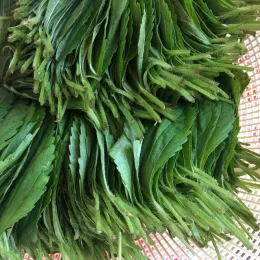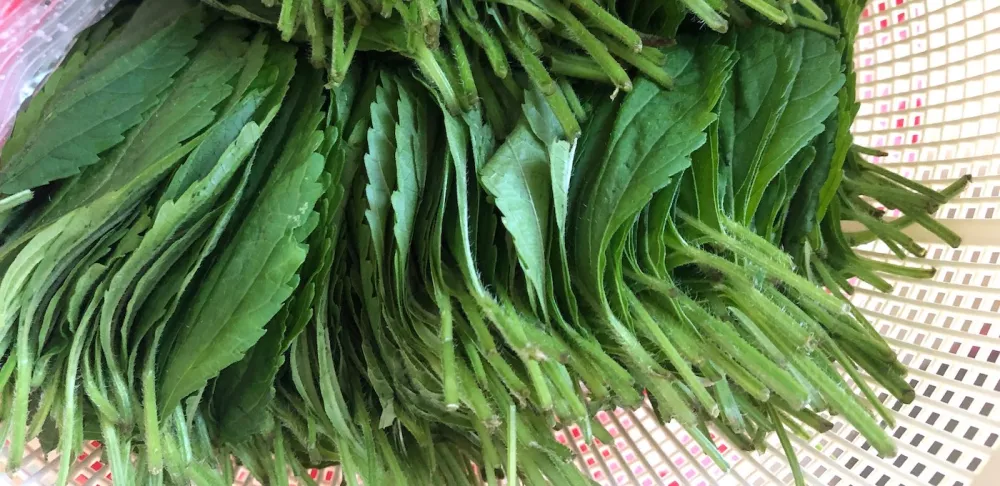While spring was the season of banana bread, it was the summer of perilla leaves for me. I never liked these uniquely aromatic leaves (called kkaennip in Korean) growing up, but something recently shifted to a full-on obsession after my months-long quarantine back in my hometown.
The fragrant, slightly acerbic nature of perilla leaves is an acquired taste even for some Koreans – it took me years to come around to its one-of-a-kind aroma and essence.
So what do perilla leaves taste like? It’s hard to pinpoint the exact flavor profile of these greens, but Maangchi notes that the taste of kkaennip is “somewhere between that of basil and mint.”
Perilla uses vary greatly, from its inclusion in stews, as wraps for meat and rice, and pickled into banchan (side dish). Kkaennip cuts through the richness of food well, providing a welcome counterbalance to heartier dishes. And because they are relatively easy to grow, many people – including my grandma — add perilla leaves to their home garden assortment.
Speaking of my grandma — she makes incredible pickled perilla leaves, a banchan called kkaennip jangajji. The leaves are layered with a savory, spicy marinade studded with toasted sesame seeds and diced green onions, and once softened, are sublime eaten atop fresh white rice. The great thing about banchan is that they can be laid out and eaten with whatever is for lunch or dinner — I’ve definitely enjoyed perilla leaves with frozen pizza and creamy pasta. The hit of acidity adds a refreshing antidote to an otherwise one-note-rich meal.
When I moved back to New York City after moving home during the pandemic, and saw perilla leaves at H Mart, I knew I had to recreate my grandma’s jangajji banchan, if only to indulge in recent nostalgia. Perilla tastes like home and always reminds me of my culinary roots. It was strangely empowering to land on my own version of this side dish, like putting together pieces of a puzzle I didn’t know I could solve. My grandma’s perilla leaves will always reign supreme — she has no recipe and does it all by familiar taste — but this is a small way of bringing a piece of home to my Brooklyn apartment and paying homage to her culinary prowess. After all, imitation is the highest form of flattery.


Ingredients
- 20-25 perilla leaves, washed and patted dry
- 1/4 cup plus 1 tablespoon green onion, diced
- 1 tablespoon plus 1 teaspoon toasted sesame seeds
- 1 tablespoon plus 1 teaspoon soy sauce
- 2 3/4 teaspoons honey
- 2 3/4 teaspoons mirin
- 1 teaspoon rice vinegar or Korean apple vinegar
- 1 teaspoon gochujang (Korean red chile paste)
- 1 teaspoon gochugaru (Korean red chile pepper flakes)
- 3/4 teaspoon garlic, minced
- Fish sauce, to taste
Directions
- Combine all ingredients, minus the perilla leaves, in a small bowl. Taste and adjust as needed.
- Spoon a small amount of the sauce on the bottom of a shallow airtight container.
- Place 2-3 perilla leaves on top, followed by another spoonful of the sauce. Spread the sauce over the entire leaf if possible.
- Continue layering with 2-3 leaves at a time, finishing with some sauce on top.
- Allow perilla leaves to marinate for a few hours before consuming with rice or as a side dish. Perilla leaves will keep in the refrigerator for about 1 week.
Read more about cooking with leaves, and explore career training in plant-based cooking at ICE.




